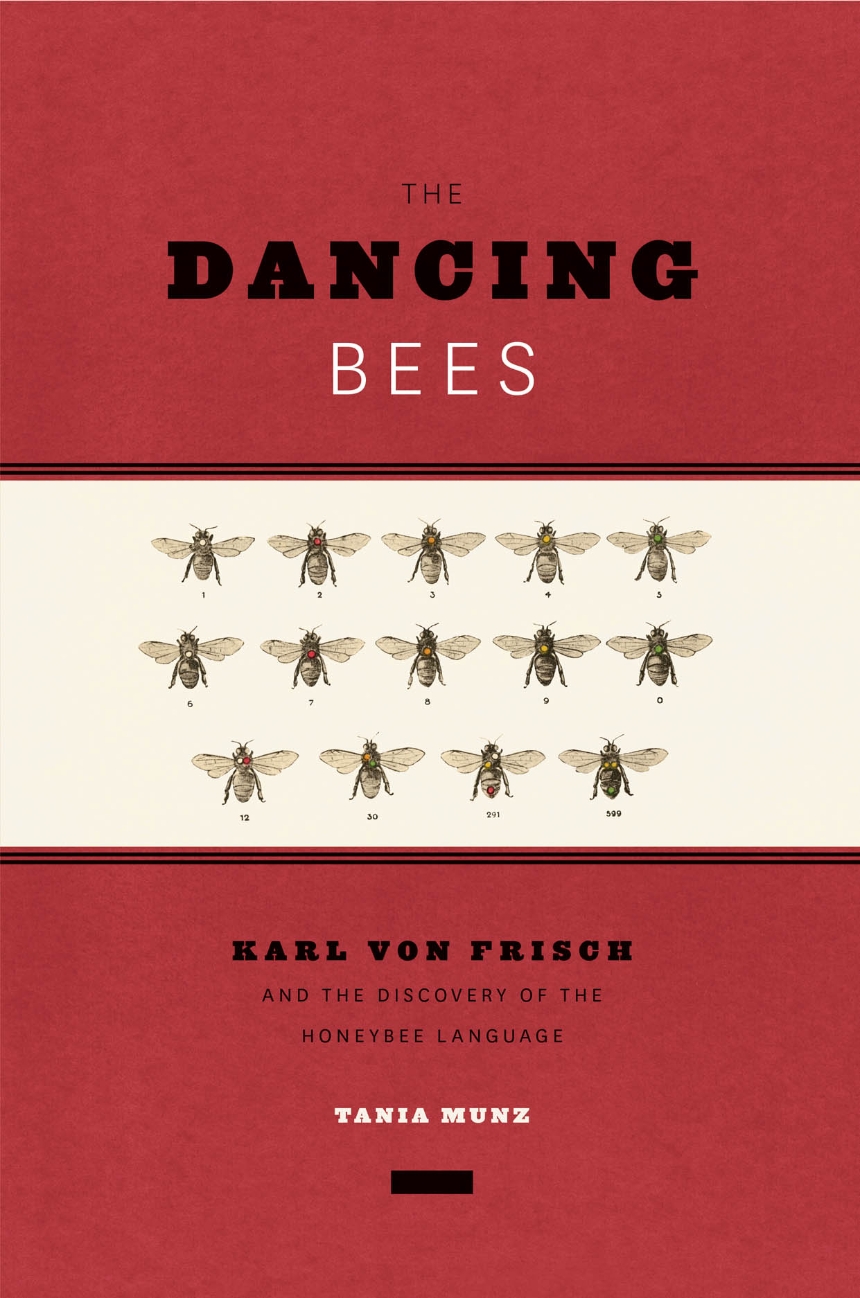The Dancing Bees
Karl von Frisch and the Discovery of the Honeybee Language
9780226526508
9780226020860
9780226021058
The Dancing Bees
Karl von Frisch and the Discovery of the Honeybee Language
We think of bees as being among the busiest workers in the garden, admiring them for their productivity. But amid their buzzing, they are also great communicators—and unusual dancers. As Karl von Frisch (1886–1982) discovered during World War II, bees communicate the location of food sources to each other through complex circle and waggle dances. For centuries, beekeepers had observed these curious movements in hives, and others had speculated about the possibility of a bee language used to manage the work of the hive. But it took von Frisch to determine that the bees’ dances communicated precise information about the distance and direction of food sources. As Tania Munz shows in this exploration of von Frisch’s life and research, this important discovery came amid the tense circumstances of the Third Reich.
The Dancing Bees draws on previously unexplored archival sources in order to reveal von Frisch’s full story, including how the Nazi government in 1940 determined that he was one-quarter Jewish, revoked his teaching privileges, and sought to prevent him from working altogether until circumstances intervened. In the 1940s, bee populations throughout Europe were facing the devastating effects of a plague (just as they are today), and because the bees were essential to the pollination of crops, von Frisch’s research was deemed critical to maintaining the food supply of a nation at war. The bees, as von Frisch put it years later, saved his life. Munz not only explores von Frisch’s complicated career in the Third Reich, she looks closely at the legacy of his work and the later debates about the significance of the bee language and the science of animal communication.
This first in-depth biography of von Frisch paints a complex and nuanced portrait of a scientist at work under Nazi rule. The Dancing Bees will be welcomed by anyone seeking to better understand not only this chapter of the history of science but also the peculiar waggles of our garden visitors.
The Dancing Bees draws on previously unexplored archival sources in order to reveal von Frisch’s full story, including how the Nazi government in 1940 determined that he was one-quarter Jewish, revoked his teaching privileges, and sought to prevent him from working altogether until circumstances intervened. In the 1940s, bee populations throughout Europe were facing the devastating effects of a plague (just as they are today), and because the bees were essential to the pollination of crops, von Frisch’s research was deemed critical to maintaining the food supply of a nation at war. The bees, as von Frisch put it years later, saved his life. Munz not only explores von Frisch’s complicated career in the Third Reich, she looks closely at the legacy of his work and the later debates about the significance of the bee language and the science of animal communication.
This first in-depth biography of von Frisch paints a complex and nuanced portrait of a scientist at work under Nazi rule. The Dancing Bees will be welcomed by anyone seeking to better understand not only this chapter of the history of science but also the peculiar waggles of our garden visitors.
296 pages | 26 halftones, 7 line drawings | 6 x 9 | © 2016
Biological Sciences: Behavioral Biology
History: Environmental History, European History
Reviews
Table of Contents
Introduction: Sensational Findings
Bee Vignette I: Victorian Bees
Chapter 1: Coming of Age in Vienna
Chapter 2: The Bees That Could
Bee Vignette II: Sensing the Senses
Chapter 3: Calm before the Storm
Chapter 4: In the Service of the Reich
Bee Vignette III: Deep inside the Hive
Chapter 5: State of Grace
Chapter 6: Picking Up the Pieces in Postwar Germany
Chapter 7: Coming to America
Bee Vignette IV: Seeing Bees
Chapter 8: Attack on the Dance Language
Conclusion: 180/60
Acknowledgments
Notes
Bibliography
Index
Bee Vignette I: Victorian Bees
Chapter 1: Coming of Age in Vienna
Chapter 2: The Bees That Could
Bee Vignette II: Sensing the Senses
Chapter 3: Calm before the Storm
Chapter 4: In the Service of the Reich
Bee Vignette III: Deep inside the Hive
Chapter 5: State of Grace
Chapter 6: Picking Up the Pieces in Postwar Germany
Chapter 7: Coming to America
Bee Vignette IV: Seeing Bees
Chapter 8: Attack on the Dance Language
Conclusion: 180/60
Acknowledgments
Notes
Bibliography
Index
